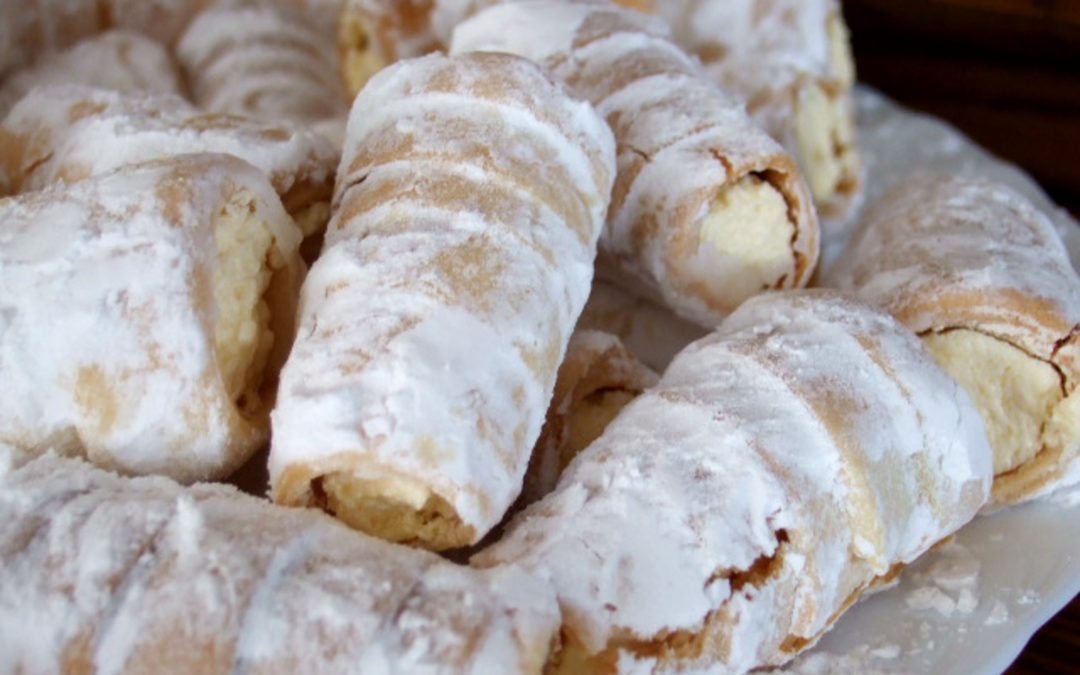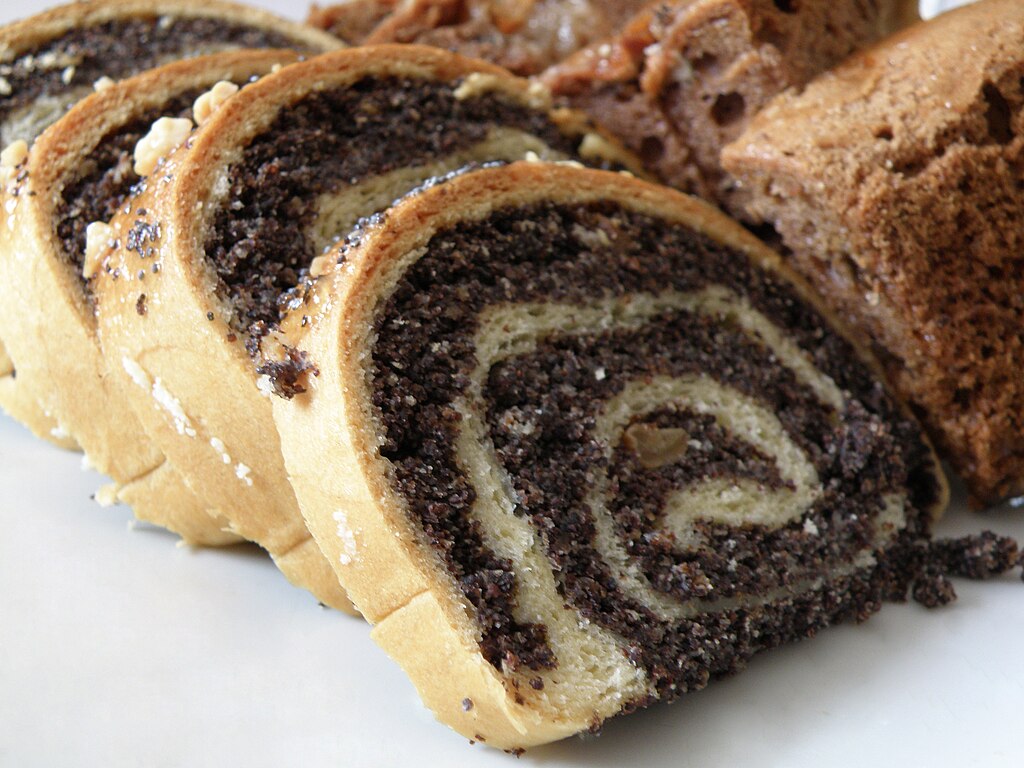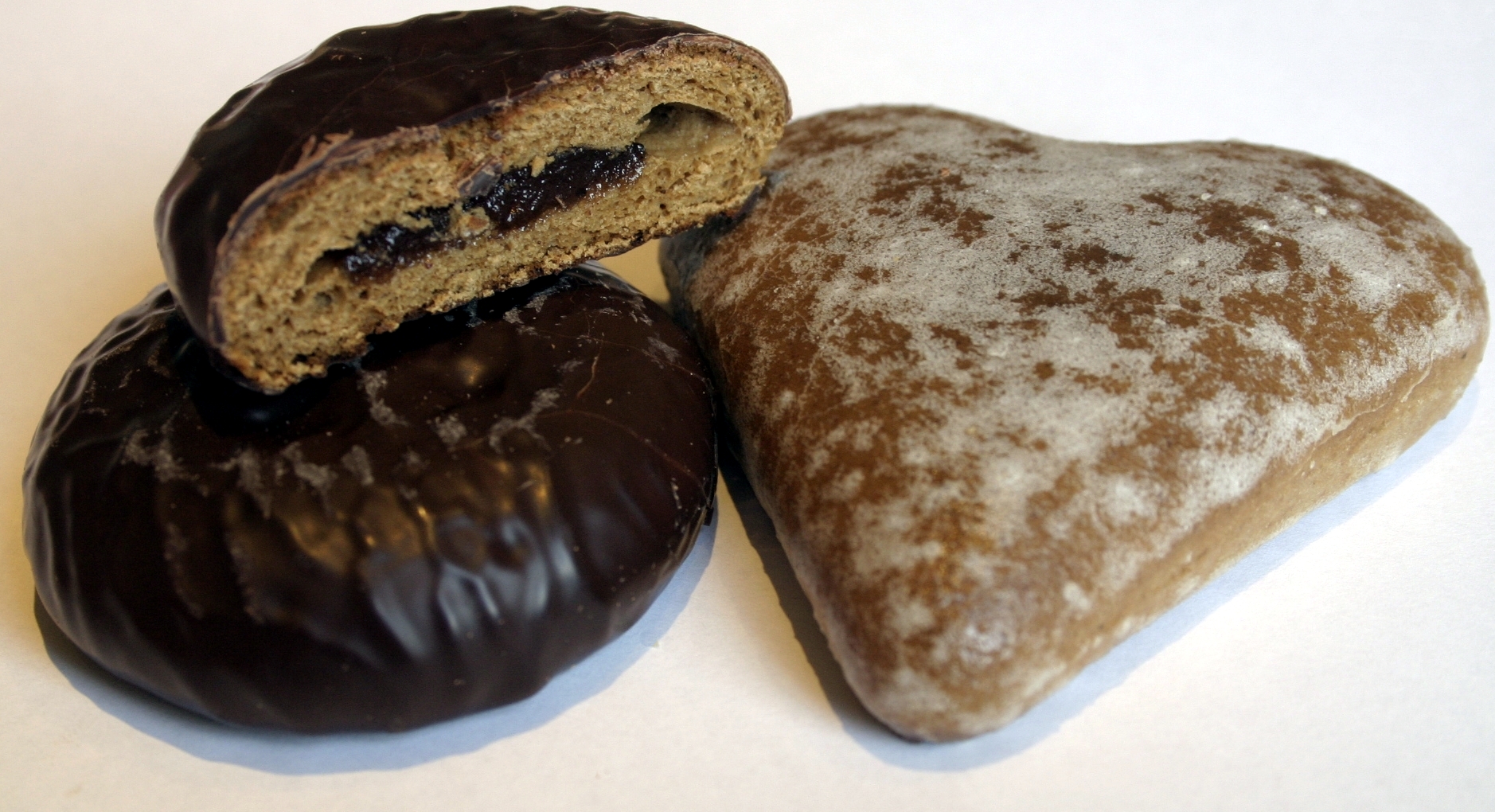By Gregor Gowans
Poland is home to countless appetising dishes – something that’s especially true for its desserts and sugary snacks. Polish biscuits, cakes, pastries and chocolate bars are some of the best on the planet, so there’s every reason to indulge.
Such is the variety of sweet treats that Poland offers that highlighting just nine of the best will inevitably spark heated debate about what’s missing. But we’ve endeavoured to produce a diverse list of classic Polish confectionery, many of which have some fascinating – and often surprising – cultural or historical links.
So, without further ado, here is a list of nine must-try Polish treats for the discerning łasuch (or owner of a sweet tooth).
Makowiec
Synonymous with the dishes served on Wigilia, or Christmas Eve, makowiec is a poppy-seed cake that was supposedly popularised by post-World War I settlers from Eastern Poland.Given that poppy seeds were once an expensive ingredient limited to affluent households, many Poles used to reserve makowiec for special occasions like Christmas, Easter and important family celebrations.
According to legend, the poppy seeds in a makowiec ensured happiness and protected against evil. Due to the poppy plant having thousands of seeds, the cake was also a symbol of fertility.
Such thoughts may not be at the forefront of Polish minds today. Even so, this heavy but sweet and moist dessert has enough assets to ensure its popularity for years to come.
Pick ‘n’ mix chocolates by Wawel, Solidarność and others

Many of Poland’s larger supermarkets offer a pick ‘n’ mix treasure trove of classic chocolates with appetising fillings. Although these sweets may no longer be the height of fashion, they are still enjoyed by Poles of all ages.
The Wawel company produce some of the most iconic of these chocolates, including Tiki Taki (with a peanut and coconut filling), Malaga (plum cream), Kasztanki (wafer) and Trufle (rum truffle). Meanwhile, the chocolatiers at Solidarność offer their own classics, which boast fillings of plum, cherry or pistachio.
Of the two companies, Wawel has the longer history – the Kraków-based confectioner dates back to 1898 (although production has now moved to nearby Dobczyce). Solidarność, located in Lublin, started making their chocolates in 1952.
Rurki z kremem
One of the most memorable era sweet treats of the communist era in Poland is arguably the humble “tube with cream” – a cylinder of pastry loaded with whipped cream and topped with icing sugar.
The dessert may appear a bit outdated in 2019, but a hunger for nostalgia means a few small vendors have brought back these stuffed pastries. Meanwhile other confectioners, such as the legendary Rurki z Wiatraka in Warsaw, see no reason to stop what they started way back in the late ’50s.
The satisfying mixture of textures, plus the ease of production and relatively low cost, have made rurki z kremem a hit with sellers and buyers alike.
Toruń gingerbread
Although Toruń’s magnificent city centre enjoys UNESCO World Heritage Site status, it is by no means the only draw for tourists. Few visitors leave without sampling some of the city’s legendary gingerbread.
This most historic of treats dates back as far as the 13th century. It is said that Toruń’s rich soil, as well as its proximity to the port of Gdańsk, made the city the ideal place to combine ingredients from near and far. Local wheat was used to make sweet dough, while spices from as far as India were added to the mix. The end result was a truly distinctive biscuit that is still revered to this day.
Throughout the years, kings visiting Toruń were presented gingerbread by the mayor as part of a special ceremony – highlighting the treat’s symbolic importance to the city.
Nowadays most of Toruń’s gingerbread is produced on an industrial scale, though brands like Kopernik still take the process very seriously. The dough must be aged to allow it to become satisfyingly rich, while only six of their bakers are said to know the exact recipe.
Rogal świętomarciński
Arguably one of the greatest sweet pastries in the world, the hugely gratifying rogal świętomarciński – or St Martin’s croissant – has become a symbol of the city of Poznań.
Packed into the pastry are white poppy seeds, vanilla, sugar, nuts and raisins – an exquisite combo that unfortunately commands a hefty price. As a consequence, many imitations with names such as “rogal poznański” or “rogal wielkopolski” are sold throughout Poland. These wannabe rogals are nothing like the real deal though, as they tend to skimp on the tastier, more expensive ingredients.
Legend has it that the rogal owes its shape to the lost horseshoe of St Martin, Poznań’s patron saint. Every 11th November, Poznań proudly celebrates both Poland’s Independence Day and St Marcin’s Day. The latter celebration provides the perfect excuse for Posnanians to sink their teeth into a rogal świętomarciński or two.
Nowadays the rest of the country typically get in on the act too, and given how satisfying these rogals are, why not?
If you can’t wait until November, just be sure to pay a visit to Poznań. You can enjoy a rogal świętomarciński there all year round, and for good reason too.
Ptasie mleczko
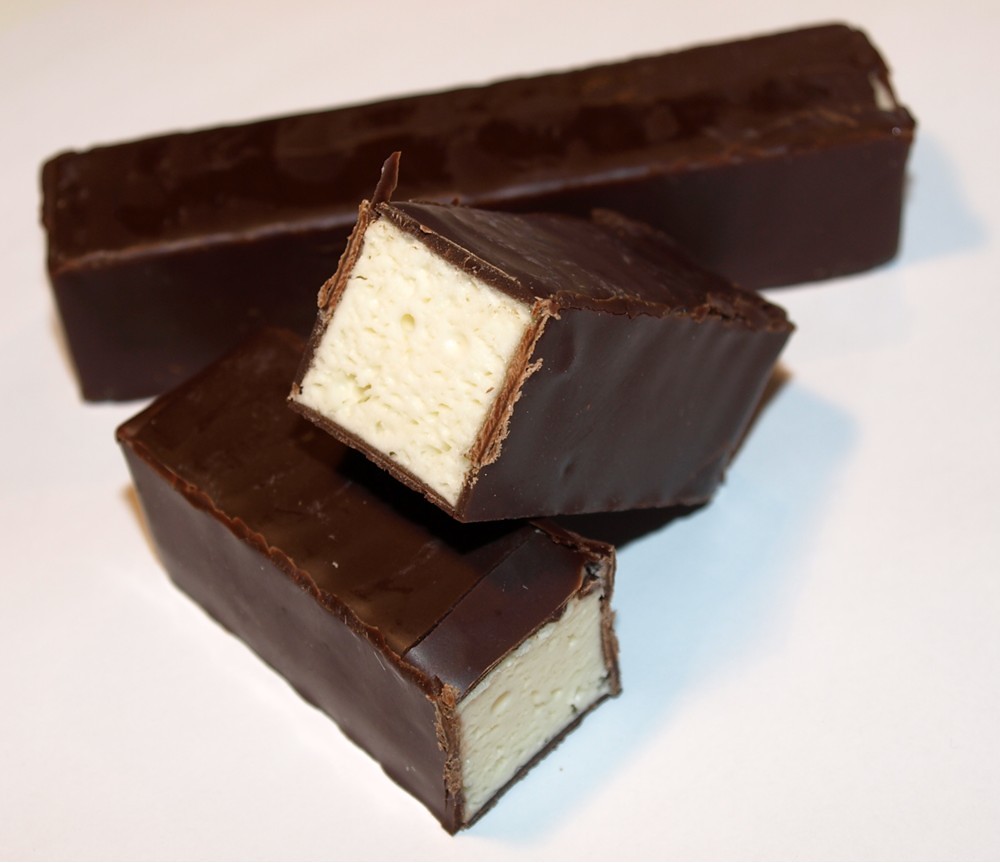
Bodo/Flickr (under CC BY 2.0)
A common sight in the confectionery section of any Polish supermarket or convenience store, ptasie mleczko are delectable rectangular cubes of chocolate with a milky, marshmallow-like filling.
These iconic sweet treats, invented by well-known chocolatiers Wedel in 1936, can be translated into English as “bird’s milk”. The name’s origin goes back to the concept of avian milk from Greek mythology.
The founder of Wedel struck on the idea for the name when travelling through France, deciding that bird milk was possibly the only thing that could appeal to a man who “already has everything”.
Pączki
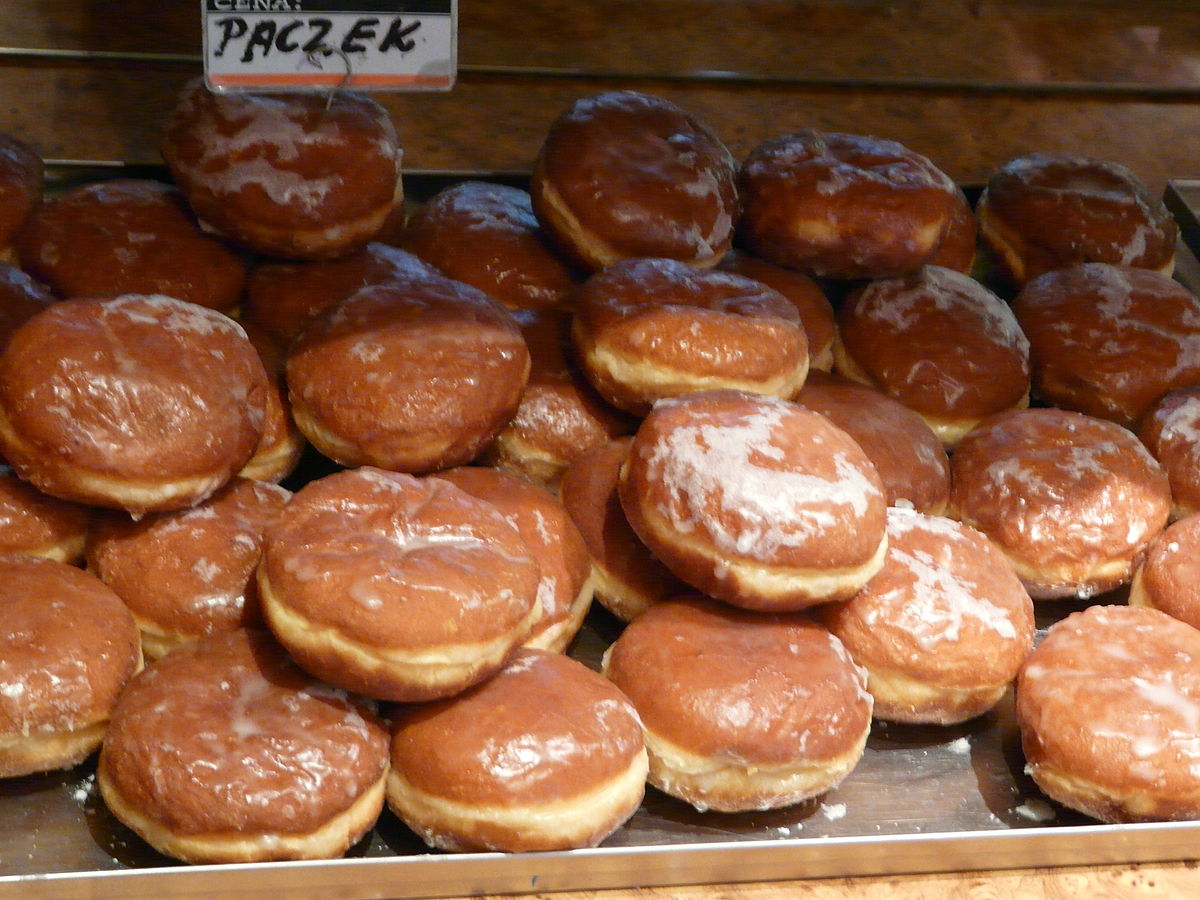
Piotrus/Wikimedia Commons (under CC BY-SA 2.5)
Pączki, Poland’s famous stuffed doughnuts, are of course inextricably linked to the country’s Tłusty Czwartek (Fat Thursday) tradition.
Today is #TlustyCzwartek #FatThursday, when Poles stuff themselves full of pączki (doughnuts).
Huge queues form outside then best bakeries, including this one in Warsaw that stretches around three corners pic.twitter.com/WKZSjHwrS2
— Notes from Poland ?? (@notesfrompoland) February 28, 2019
Every year, millions of Poles chomp their way through several pączki to mark the last Thursday of the Carnival period before the start of Lent. For devout Catholics, Fat Thursday provides one of the last opportunities to indulge until Easter arrives. For everyone else, it’s just a great excuse to enjoy an unhealthy amount of these luscious Polish doughnuts.
Back in the day, Poles would typically gorge on pączki together with friends and relatives. Nowadays, working adults are more likely to enjoy them in the office, as companies often buy piles of the doughnuts for their employees.
Long ago, instead of the typical pączki devoured today, people would eat bread stuffed with bacon. In fact, it was not until the 16th century that the Polish tradition of eating doughnuts became commonplace.
Even then, the doughnuts differed to what is eaten now. The stuffing was usually based on peanut or almond, and those who bit into the nut were said to enjoy a future of prosperity and success. Fast forward to today, and the popular stuffings now include strawberry or rose-flavoured jams.
Pączki appear to have undergone something of a revival in recent years, largely thanks to the arrival of pączkarnie – small take-away confectionery outlets that specialise in doughnuts. Many pączki lovers would nonetheless advise you to snub such places, preferring a local cukiernia.
Sernik (cheesecake)

Piotrus/Wikimedia Commons (under CC BY-SA 3.0)
The type of sernik on offer varies by region. However, the key ingredient is the same: a generous smothering of fatty twaróg cheese.
The story of how the cheesecake first arrived in Poland is shrouded in mystery. Some speculate that the recipe came to the country in the 17th century, when King Jan III Sobieski’s troops made their triumphant return from the Battle of Vienna.
Chocolate wafers (Prince Polo and others)
Chocolate wafers have been popular in Poland for decades, retaining their appeal long after the fall of communism. Arguably the most famous of these chocolate bars is the iconic Prince Polo, which Poles first became acquainted with back in 1955.
Produced in Cieszyn in the far south of the country, Prince Polo bars stood out on account of their alluring gold wrappers. The gratifying simplicity of four layers of wafer and chocolate has nonetheless been at the heart of the bar’s success.
Of course, Poles are not alone in their love of the humble Prince Polo bar. It is in fact one of the best-selling chocolate bars in Iceland, where it has been on the market for over 60 years.
Due to Iceland’s strict regulations covering sweets, Prince Polo was one of the few chocolate bars on the market. It is said that the chocolate wafers were classified as biscuits in Iceland, allowing them access to the country’s supermarket shelves. In return for selling Prince Polo to Iceland, Poland received fresh fish.
And a few other treats worth trying…
Given the abundance of amazing confectionery on offer in Poland, some readers will inevitably be questioning why their favourite item was snubbed. Perhaps you might be thinking about a few of the sweet treats below?
Szarlotka, Polish apple cake, of course remains very popular. When it comes to Fat Thursday, the alternative to pączki are faworki, twisted ribbons of pastry dough topped with icing sugar. Another classic is the popular yeast cake, or ciasto drożdżowe, which is most often enjoyed at Easter time alongside mazurek, a shortcake topped with nuts, caramel and dried fruits. Fans of cream can also sink their teeth into a kremówka or napoleonka cake – essentially a sweet cream sandwich, famous for having been a favourite of Pope John Paul II.
Naturally, there are even more Polish desserts that we could write about. That said, these should be more than enough to satisfy your sweet tooth for the coming months!
Main image credit: Jos/Wikimedia Commons (under CC BY 3.0)
